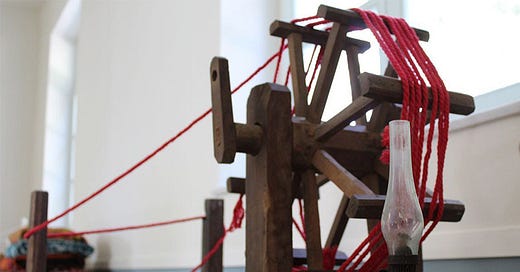Magical Red Yarn and Greek Folk Storytelling
Everything is true, nothing is real: opening and closing the liminal circle
Welcome back to Thyrathen and Happy Thanksgiving to my American friends and readers!
Today’s scheduled article was to have been Part 5 of my Greek Women’s Magic series.
However, I am reshuffling the order of publication, because I have been working on a sequence to cover the festive season. To get the dates right, I needed to use this week to provide some context and get everyone in the mood!
I will slip in the missing article sometime in the next few weeks as I’m trying to keep a consistent posting schedule.
In the meantime, I’ve been bounding down the rabbit holes of Greek magical folk culture and bring for your delectation a spinning wheel with magical yarn…
Rabbit holes and red threads
I’m very excited about the upcoming festive series as the research has led me along some wondrous paths that I can’t wait to share with you! Next week’s instalment features some extra special wondertales, and a number of surprises.
But I’m getting ahead of myself. Let me start at the beginning.
Many m…
Keep reading with a 7-day free trial
Subscribe to Thyrathen: Greek Magic, Myth, and Folklore to keep reading this post and get 7 days of free access to the full post archives.





